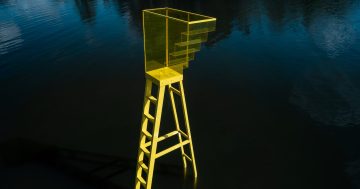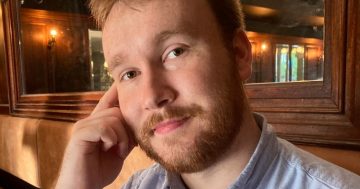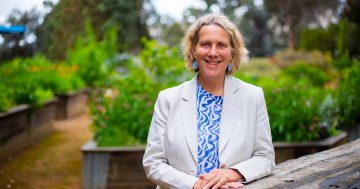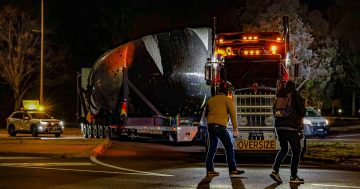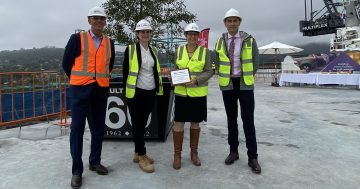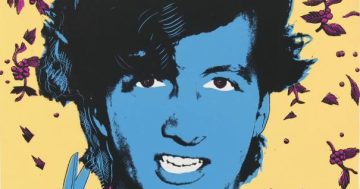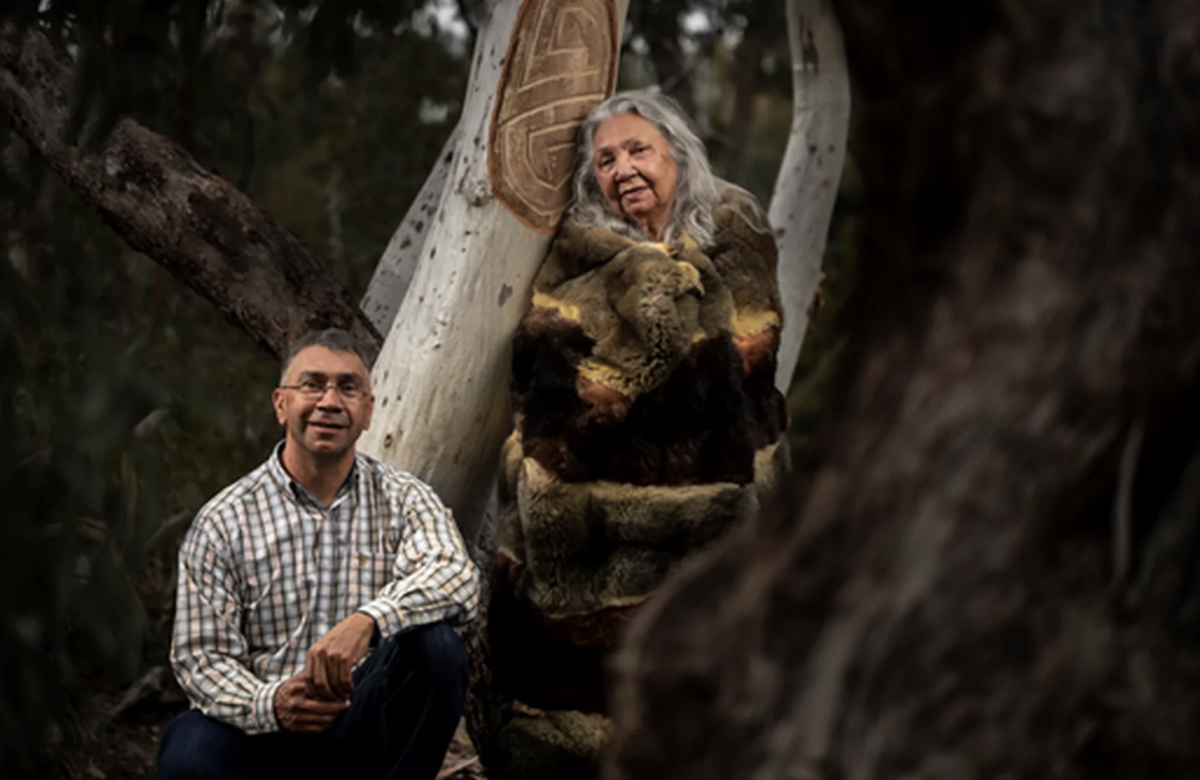
Paul Girrawah House and Matilda House with a marked tree. Photo: Ngambri.gov.au.
Mention public art and you’re probably thinking about the Belconnen owl, the whirling windmills at Tuggeranong or some of the massive artworks in Civic, purchased through the public art fund established by former chief minister Jon Stanhope.
But could public art also be an array of bowls, a scarred tree or a mosaic wall?
As Canberra’s art biennial comes to an end, flowing into the month-long DESIGN Canberra festival, the two events are collaborating on a symposium, Discover – Public Art in Canberra, this Saturday.
The symposium will discuss First Nations artists in public art, legacy artworks and how they mark the city, and examine how to succeed in public art, focusing on knowledge transfer and the role of mentors. Along the way it will address questions including, what do you like or dislike about public art in Canberra? When does art fail? And when does art succeed?
Ngambri cultural custodian and artist Paul Girrawah House has returned to the scar trees practices of his ancestors, who marked trees across the Canberra region to create canoes, shields, mark pathways and indicate medicine. Originally the work would have been created with stone blades but House uses a mallet and chisel to cut into the bark.
He says the act of making public art in the city is about reclaiming one tree at a time, along with the Ngambri people’s cultural identity.
“Making these marks is also truth telling about how Canberra got its name; it’s a powerful and compelling story about how Canberra was first recorded,” he says.
“I’m acknowledging our old people, our elders, respecting and honouring their legacy by continuing our cultural practice on country.”
Paul says when he marked trees during the recent Indigenous triennial at the National Gallery it was a powerful moment for First Nations people and non-Indigenous observers. “A lot of people felt good about the work, what they were looking at and the interpretation I was giving them,” he says. “There was a happiness around it for us asserting our rights, and controlling the narrative.
“These artworks exemplify the ideas of lore versus law – our customs, our governance systems and our cosmology.”

Brett Stone’s ceramic bowls are used to evoke the mood of local landscapes and places. Photo: Supplied.
Ceramic artist Brett Stone’s installation at Manning Clark House represents fire and water through glazed bowls, arranged to evoke patterns and ideas within the local landscape.
Smoke represents conversations and gatherings around the house’s fireplace – family, friends and colleagues, and in Lake Burley Griffin – Dusk the massed bowls become the choppy surface, the reflective surface that belies the muddy water beneath.
“I want people to rethink what they see every day and take for granted,” he says of his decision to use very familiar forms to construct each installation.
“In Manning Clark House there are stacks of bowls everywhere so I was conscious of using domestic scale to tell a story. You could literally have a dinner party with the sculpture,” he says.
Brett loves the idea the his installations could become embedded in the city’s history and archaeology, imagining it beneath the floor of a modern building like an historic artefact. “If the world came to an end tomorrow and Canberra was covered in ash, I’d like people to ask whether they’d unearthed a banquet or an artwork,” he says.
The symposium is being held at Kambri on the ANU campus between 1 pm and 5:30 pm. Tickets are available here.
Installations for the biennial are placed throughout the central city area, at the Arboretum and the University of Canberra, featuring work from 61 artists. Find out more about the program and artworks here.
Biennial events this weekend include Culture Cruise, in collaboration with Australian Dance Party. This is an all-inclusive lake cruise and walking tour that weaves together visual art, architecture, live dance, amazing music, theatrical tour guides and local food and wine.
Louise Curham and Lucas Ihlien will also be showing their short films at 8 Petrie Plaza on Saturday between 7:30 pm and 9 pm (free entry).












